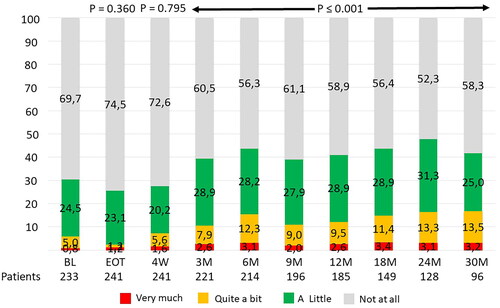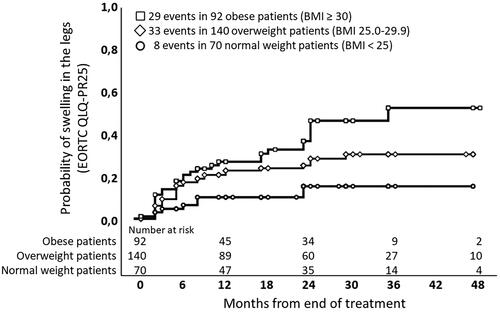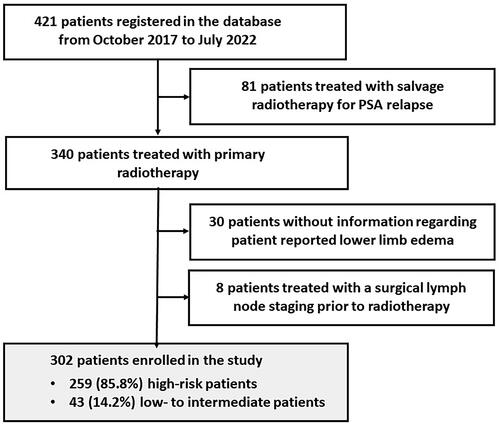Figures & data
Table 1. Patient, disease and treatment characteristics at baseline.
Figure 2. Prevalence rates of patient reported outcome in 302 prostate cancer patients after radiotherapy (EORTC QLQ-PR25) for item 46: ‘have you had swelling in your legs or ankles?’ with answer categories ‘not at all’, ‘a little’, ‘quite a bit’ or ‘very much’.
BL: baseline; EOT: end of treatment; M: months.

Table 2. Univariable and multivariable analysis of prognostic factors for patient reported outcome (EORTC QLQ-PR25) for item 46: ‘have you had swelling in your legs or ankles?’ in 302 prostate cancer patients reporting ‘quite a bit’ or ‘very much’ after definitive radiotherapy.
Figure 3. Kaplan-Meier actuarial estimates for patient reported outcome (EORTC QLQ-PR25) for item 46: ‘Have you had swelling in your legs or ankles?’ in 302 prostate cancer patients reporting ‘quite a bit’ or ‘very much’ after definitive radiotherapy. Patients are stratified according to Body Mass Index (BMI) in normal weight patients (BMI < 25), overweight patients (BMI 25.0–29.9) and obese patients (BMI ≥ 30).

Data availability statement
The authors confirms that the data supporting the findings of this study are available within the article. Raw data that support the findings of this study are available from the corresponding author, upon reasonable request.

